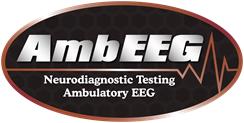AmbEEG, LLC
1100 Glade Rd #2
Colleyville, TX 76034
About EEG Services
What is an Ambulatory EEG?
An ambulatory electroencephalogram (EEG) is a neurodiagnostic test that measures and records the electrical activity in your brain. Unlike a routine EEG, an ambulatory EEG allows an extended recording in a patient’s home. The patient is able to move around and is not required to stay in the hospital for the recording.
An ambulatory EEG is often performed when an extended recording is necessary is to diagnose a disorder. While a traditional EEG records for 20-40 minutes, an ambulatory EEG has the ability to record continuously for up to 72 hours, increasing the likelihood that abnormal electrical activity in the brain can be recorded.
Your doctor may order an ambulatory EEG for you to confirm an epilepsy diagnosis, confirm the existence of seizures you may not be aware of, evaluate the effectiveness of a treatment plan for a seizure disorder, evaluate nocturnal or sleep-related events, or evaluate syncope, a sudden and temporary loss of consciousness.
What to expect when having an Ambulatory EEG study?
Ambulatory EEG studies are completely harmless and painless. The patient may be asked by the physician to discontinue some of their medications for the study and possibly stay awake for a period of time before the study. The night before or the morning of your ambulatory EEG, shampoo your hair, rinse with clean water, and do not apply conditioner or styling products after shampooing. When your EEG technologist arrives to the patients home or place of service, 22+ disk electrodes will be placed on the patients head to record the study. The technologist will measure and mark the patients head with a Crayola like marker. Amb EEG uses the 10-20 electrode placement system to mark and apply the electrodes, for precise placement of the leads. After the head is marked a scrub gel (kind of like a facial cleaner) is used to scrub and clean each of the spots that were marked. The 22+ electrodes are then placed on the scalp with a paste to get good contact with the skin. The hair is parted for the leads to be placed on the scalp. Each lead will then have a piece of gauze with collodion, a medical grade glue, placed on top to secure the lead for the entirety of the study. The Technologist will them come back to the patient's home to unhook the patient and remove any glue and paste in the hair.


